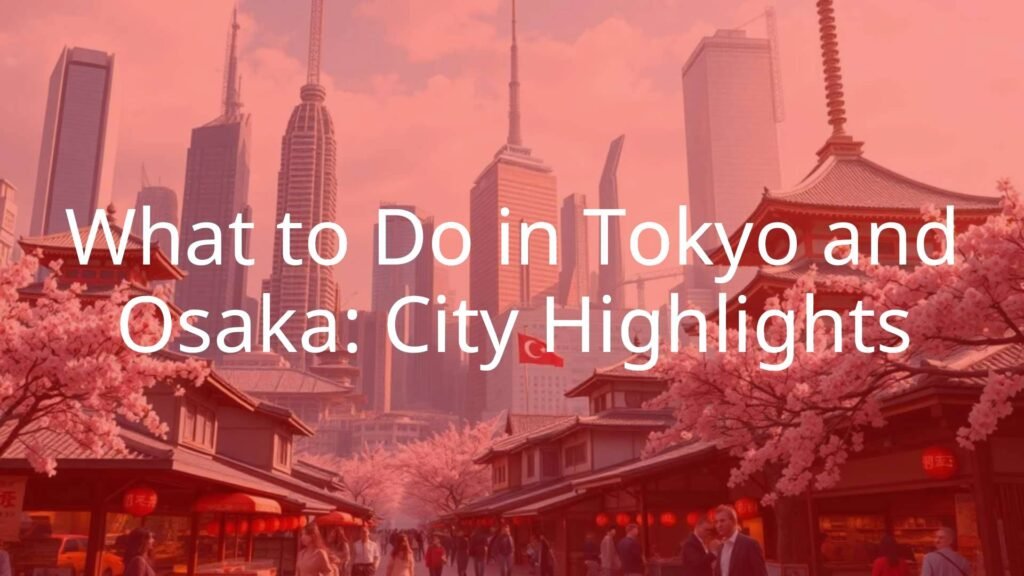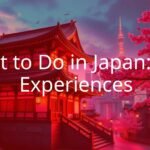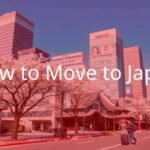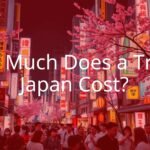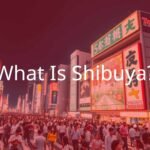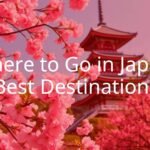If you’re unsure about what to do in Tokyo and Osaka, both cities offer a unique mix of traditional and modern experiences. You’ll find historic temples right next to futuristic skyscrapers, lively street food scenes, and peaceful gardens. Visiting Tokyo and Osaka together gives you a great way to see two sides of Japan in one trip. This guide will walk you through the main things to see and do, making it easier for you to plan a smooth visit to both cities.
What to expect from Tokyo and Osaka: city highlights compared
How do Tokyo and Osaka feel different?
Tokyo is Japan’s capital and its largest city. Here, old traditions and the latest technology meet. Tall buildings fill the skyline, but you can also find quiet temples and well-kept gardens. Tokyo is known for its variety of food from around the world, high-tech lifestyle, lively fashion, and famous anime culture. The busy Shibuya Crossing is a good example of the city’s fast pace and modern life.
Osaka, the second largest city, has a different feel. It’s famous for its laid-back atmosphere and friendly people. Often called “Japan’s Kitchen,” Osaka is especially proud of its food, including lots of street snacks. The city’s history as a merchant town shows in places like Osaka Castle. Where Tokyo can feel fast and full of options, Osaka is more relaxed and makes visitors feel welcome and at ease.

Best time to visit Tokyo and Osaka
Both cities have all four seasons, and the best time to visit depends on what you like. Spring (March to May) is popular for cherry blossoms, with mild weather but big crowds. Autumn (September to November) is nice too, with cooler weather and colorful leaves. In Osaka, September and October get busy, especially October.
Summer (June to August) can be hot and sticky, with plenty of rain in June and July. Still, summer brings fun festivals. Winter (December to February) is cold but not too crowded, and it’s often sunny. Winter’s lower visitor numbers make it good for budget-friendly trips. Pick your dates based on the weather you prefer and any seasonal events you want to join.

Tips for getting around Tokyo and Osaka
Easy transportation: trains, subways, and travel passes
Getting around Tokyo and Osaka is simple thanks to their excellent public transport. Both cities have wide networks of trains, subways, and buses. Tokyo’s system is very large and crowded-Shinjuku Station is the busiest in the world. Still, trains come on time and everything runs well.
Osaka’s trains and subways aren’t as busy, and the roads are wider with less traffic. Important lines include the Osaka Loop Line, Midosuji Line, and Chuo Line. Buy a prepaid IC card like Icoca, Suica, or Pasmo to pay quickly and easily on different forms of public transport. Although you can walk in many areas, using trains and subways saves time and helps you see more.

Traveling between Tokyo and Osaka: bullet train versus flying
The fastest and easiest way to go from Tokyo to Osaka is the Shinkansen bullet train. The ride takes as little as 2.5 hours and is comfortable and scenic. If you plan on making other long-distance train trips, a Japan Rail Pass is often cheaper.
Flying is another option, but with the time needed for airport transfers, baggage, and security, the bullet train usually comes out faster and helps you start exploring sooner. Many travelers also enjoy the bullet train as a uniquely Japanese experience.
How to organize your trip for both cities
To get the most out of both Tokyo and Osaka, you’ll want to balance what each city offers with your travel time and interests. For a 10-day trip, many people suggest something like 4-5 days in Tokyo, 2 days in Osaka, and 4 days in nearby Kyoto. If you focus only on Tokyo and Osaka, spend 4-5 days in Tokyo and 3-4 in Osaka, depending on your interests.
Plan your sightseeing days by choosing nearby attractions on the same day to cut down on travel inside the city. For example, spend a day in Tokyo around Harajuku, Shibuya, and Roppongi; another in Asakusa and Ueno. In Osaka, try exploring the Osaka Bay area one day, and the Namba and Tennoji districts another. Make sure to allow part of a day for the train ride between cities. Try to book hotels close to train stations to save time and money.
Main sights in Tokyo
Tokyo Tower and Skytree: must-see city views
To get a look at Tokyo from above, visit either Tokyo Tower or Tokyo Skytree. Tokyo Tower is an older landmark with orange and white colors, and offers great night views. Tokyo Skytree is much taller and newer, and its observation decks give wider views, even as far as Mount Fuji on a clear day. Both towers are good spots for photos and help you understand just how big Tokyo is. At the Skytree, you’ll also find a large shopping mall at the base.
Senso-ji Temple and Asakusa’s old Tokyo charm
Asakusa lets you experience what Tokyo was like in the past. Senso-ji is Tokyo’s oldest temple, found at the end of Nakamise-dori, a lively shopping street with snacks and souvenirs. Inside, you’ll see traditional Japanese customs and architecture. The area around Asakusa features narrow streets and small shops, and you can also visit museums like the Edo-Tokyo Museum to learn more about the city’s history.
Shibuya Crossing and Shinjuku at night
Shibuya Crossing shows off Tokyo’s busy side, where hundreds of people cross the street at the same time. Around the crossing, there are many shops, restaurants and cafes. Shinjuku, a nearby area, is famous for its tall buildings and busy nightlife, especially in the Kabukicho entertainment area. For a break, visit Shinjuku Gyoen Garden during the day before exploring the nightlife nearby in the evening.
Imperial Palace and Tokyo’s green areas
Tokyo isn’t all city streets-there are peaceful parks and gardens everywhere. The Imperial Palace is where Japan’s Imperial Family lives, and its public East Garden is a nice place for a walk. You’ll find other nice gardens like Hama Rikyu, with a teahouse and landscaped lawns, and Shinjuku Gyoen, which shows off several garden styles. For a quick escape into nature, Todoroki Valley outside central Tokyo offers a short walk by a small river.
Akihabara and Harajuku: pop culture and fashion
Tokyo is famous for new trends, especially in areas like Akihabara and Harajuku. Akihabara is great for electronics, anime shops, and arcades. It’s famous for “otaku” (fan) culture, and has everything from manga to gaming. Harajuku, especially Takeshita Street, is the center of unique and creative youth fashion. You’ll also see many cafes and shops with Japanese subculture themes. Both places are perfect for people interested in pop culture, fashion, or unusual shopping.

Special experiences in Tokyo
Watch sumo wrestling and learn about Japanese tradition
Seeing a sumo wrestling match is a great way to learn about Japanese life and sports. Sumo tournaments only happen in Tokyo a few times each year-usually in January, May, and September. If you can’t catch a tournament, some sumo “stables” hold open morning practices, which you can watch if you book in advance. At certain restaurants, you can try “chankonabe” (a hotpot dish sumo wrestlers eat), sometimes served near a sumo ring for atmosphere.
Themed cafés and quirky neighborhoods
Tokyo is home to many themed cafés, like those with animals you can play with or restaurants where the staff dress as maids. These spots are popular for their fun and unusual atmosphere. In addition to the cafés, districts like Nakano Broadway have many shops dedicated to anime and manga. In places like Golden Gai in Shinjuku, tiny bars line narrow streets, each with its own theme. Exploring these places lets you see Tokyo’s creative side.
Art museums and galleries
Tokyo’s museums cover both old and new art. The Tokyo National Museum has Japanese art and historical items. For modern art, check out the Mori Art Museum in Roppongi Hills or the National Art Center. Smaller galleries in places like Ginza and Omotesando often display the work of new artists. Even the Printing Museum combines art and history. Whether you like classic or modern art, Tokyo has something interesting for you.
Shopping in Ginza and Omotesando
Tokyo is great for shopping, offering everything from luxury brands to unique local items. Ginza is the best place for high-end shops and department stores. The streets are wide and the area feels fancy. Omotesando, called Tokyo’s “Champs-Élysées,” mixes international and Japanese designers into one stylish street, with many cool buildings and cafes along the way. Both districts are perfect for anyone who loves fashion, architecture, or just browsing.
Main sights in Osaka
Osaka Castle and park grounds
Osaka Castle is one of the city’s main historical sites. Built in the 1500s, it’s now a museum full of stories about the past. You can go up to the top for city views and then walk around the large surrounding park, which is especially beautiful in cherry blossom season. Exploring here gives you a deeper look at Osaka’s role in Japan’s history.
Dotonbori: Entertainment and neon lights
Dotonbori is the best place for Osaka nightlife. Bright neon signs, moving billboards like the Glico Running Man, and a lively crowd fill the streets. This area is packed with restaurants, street food stands, theaters, arcades, and bars. Try Osaka foods like takoyaki (octopus balls) and okonomiyaki (savory pancakes) from vendors along the streets. Dotonbori is the city’s top place to eat, drink, and have fun.
Universal Studios Japan: fun for everyone
If you love theme parks, don’t miss Universal Studios Japan. The park has rides and attractions based on movies like Harry Potter and Super Nintendo World. It’s very popular with families, but there’s something fun for all ages. There are also regular parades, seasonal shows, and lots of character appearances.
Shinsekai and Tsutenkaku Tower: history and local food
Shinsekai is an old entertainment district in Osaka with a “retro” feeling. The Tsutenkaku Tower stands in the center and offers city views. For a more unique experience, try the slide that runs from partway up the tower. Shinsekai is also known for its kushikatsu-deep-fried food on sticks. The area is filled with small restaurants and bars, and it’s a relaxed place to see another side of Osaka.
Sumiyoshi Taisha Shrine: old Osaka tradition
Sumiyoshi Taisha is one of Osaka’s oldest shrines, almost 1,800 years old. Its bright red buildings and curved bridge stand out, and it’s surrounded by peaceful grounds. This spot gives a calm break from the busy city and lets you see traditional Japanese spiritual culture up close.

Special experiences in Osaka
Street food tours in Dotonbori and Kuromon Market
Osaka’s nickname “Japan’s Kitchen” is no joke. Joining a street food tour in areas like Dotonbori or Kuromon Market is a great way to try the best local snacks. Dotonbori is ideal for takoyaki and okonomiyaki, while Kuromon Market is full of fresh seafood, sushi, and grilled treats. Local guides can help you find the tastiest stalls and explain the stories behind the dishes.
Cooking classes: make your own sushi, takoyaki, or okonomiyaki
If you want to learn more about Japanese food, cooking classes are a fun option. There are classes for sushi, takoyaki, and okonomiyaki. These are suitable for all skill levels and let you prepare, cook, and taste your own creations. These experiences also let you take home new cooking skills and stories.
Namba comedy theaters and shows
Osaka is famous for “manzai”-a funny comedy style with two people performing together. The Namba district has many theaters, including the Namba Grand Kagetsu, where you can see these shows. If you’re interested in other performances, try a Bunraku puppet play at the National Bunraku Theater. While jokes may be in Japanese, much of the comedy is physical and easy to understand for everyone.
Hidden neighborhoods and shopping streets
Beyond Osaka’s top sights, look for some of the less-known areas for a local feel. Shinsaibashi-suji Shopping Street is one of the city’s oldest and busiest covered arcades, with a mix of shops and food. Umeda has newer buildings and shopping malls. For a behind-the-scenes look, some tours take you through smaller, everyday neighborhoods and less-visited parts of the city, offering a closer look at daily life in Osaka.
Food: where to eat in Tokyo and Osaka
Tokyo: Michelin restaurants and ramen shops
Tokyo is known worldwide for fine dining, with more Michelin-starred restaurants than anywhere else. You can enjoy carefully prepared sushi, traditional Japanese meals (kaiseki), fancy tempura, and more. For instance, Udatsu Sushi and Waketokuyama are known for their top food and seasonal menus. Besides high-end food, Tokyo also has countless ramen shops. Rokurinsha, in Tokyo Ramen Street, is one of the most famous. Tsukiji Fish Market is good for fresh seafood, sushi, and easy meals all day.
Osaka: best known for street food
Osaka is all about tasty, affordable eats. The main street foods to try are takoyaki (octopus balls), okonomiyaki (savory pancakes), and kushikatsu (fried skewers). Head to Dotonbori for a wide range of food stalls. Kuromon Market also offers everything from sushi to wagyu beef on sticks. Many locals say they’d rather spend money on good food than anything else, and you’ll see why once you try the local specialties.
Where to eat-options for all budgets
Both cities have everything from quick, cheap snacks to expensive, multi-course meals. In Tokyo, you can find reasonable meals like tempura rice bowls or ramen, plus high-quality food in convenience stores. In Osaka, look for takoyaki or okonomiyaki shops for tasty but affordable meals. Izakayas (Japanese pubs) in both places are great for small, shareable plates and drinks at good prices, perfect for trying several different dishes in one visit.
Nightlife in Tokyo and Osaka
Best places for bars and izakaya in Tokyo
Tokyo’s nightlife has something for everyone. Shinjuku is the biggest nightlife area, with Kabukicho full of bars, clubs, and karaoke. For something different, visit Golden Gai, a maze of tiny bars each with its own style. Shibuya and Ebisu offer trendier spots, while Ginza is the place for more elegant, quiet bars. Nearly every neighborhood has izakayas where you can eat and drink in a lively setting.
Osaka: nightlife areas to visit
Osaka’s nightlife is just as lively, especially around Minami (Namba) and Dotonbori. Here you’ll find neon lights, bars, karaoke, restaurants, and late-night shops. Kitashinchi in Umeda has more upscale bars and clubs. Smaller, cozy bars are everywhere, especially in alleyways around Namba, perfect for meeting locals or enjoying a relaxed night out.
Late-night fun and tips
Both Tokyo and Osaka have plenty to do at night. In Tokyo, check out the Robot Restaurant for a flashy show, sing at a karaoke box, or play games at an arcade in Akihabara. In Osaka, watch a comedy show or see Bunraku puppet theater. For a fun time, try small bars or izakayas in the side streets. Remember, trains stop running around midnight, so know when your last train leaves to avoid expensive taxis.
Shopping in Tokyo and Osaka
Where to shop for electronics, clothes, and souvenirs
Both cities are great for shopping, but have different best spots. In Tokyo, go to Akihabara for electronics and anime, Shibuya and Harajuku for youth fashion, Ginza for luxury, and Asakusa for traditional gifts. In Osaka, Den-Den Town is the place for electronics, while Umeda and Namba have huge shopping malls for clothes. Shinsaibashi-suji Street is a busy arcade with a bit of everything. You’ll find souvenirs everywhere, from sweets to themed keychains.
Comparing Tokyo and Osaka for shopping
Tokyo’s shopping areas are usually focused on certain kinds of goods or styles-for example, Ginza for brands or Akihabara for tech. There’s often a sense of exclusivity and specialization. In Osaka, shopping is more mixed and often feels more casual and friendly. You might even find it easier to bargain in Osaka than in Tokyo. While Tokyo has the newest trends and wider variety in specific niches, Osaka’s shopping areas are more relaxed and easier to explore.
Frequently asked questions about Tokyo and Osaka
Is it better to visit Tokyo or Osaka first?
It often makes sense to start in the city where your flight arrives, usually Tokyo (Narita or Haneda airport). That way, you can get used to Japan in the country’s biggest city, then move to the more easy-going style of Osaka. However, if your flight is cheaper to Osaka’s Kansai Airport, you can start there as well. Both cities are connected by fast trains and are used to foreign visitors, so you can pick either as your first stop based on what works best for you.
How many days should you plan for each city?
Most people need more time in Tokyo because it’s larger and there’s more to see. Four or five days lets you experience the main areas, try different foods, and visit museums or do some shopping. Two or three days in Osaka is usually enough to cover the must-sees like Osaka Castle, Dotonbori, Universal Studios, and try plenty of food. If you want to take day trips to Kyoto or Nara from Osaka, you’ll want to add a day or two.
Is it easy to travel between Tokyo and Osaka with children?
Yes, it’s very easy to travel with kids between Tokyo and Osaka. The Shinkansen is fast, clean, and comfortable, and many children enjoy the train ride. There’s space for luggage, bathrooms, and sometimes food trolleys. Both cities have good public transport, and while some stations can be busy, most places are stroller-friendly. You’ll also find something for every age group, like theme parks and family restaurants, and Japanese people are generally helpful to families.
- What Is a Maiko? - July 13, 2025
- What Does Domo Arigato Mean? - July 12, 2025
- What Does Naruto Mean? - July 12, 2025

